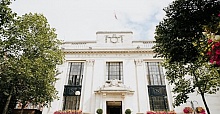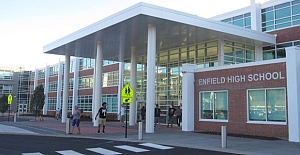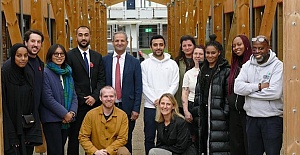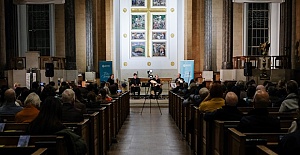In the recently published articles entitled, “Airport Tales” and “Mayday. Mayday” - Airport memories 25 years on- the writer has drawn upon personal, hands-on experience to share with readers aspects of airport maintenance that are not usually in the public domain, together with some anecdotes that are entirely unique. This is not for any purpose of self- aggrandisement, it is simply that few have made the transition from a Highways and Airport maintenance related career to that of writing, the latter proving to be a wonderful medium wherewith to share memories that would otherwise be lost as time unfolds. This particular article is likely however, to be the last such piece but even if this proves to be so, only snap-shots of the 'behind the curtain' world of 'live' airport maintenance are revealed.
One of the biggest headaches that airport operators face in relation to aircraft safety relates to the maintenance of runway skid resistance values (SRV's). Runways are constructed and laid-out to provide for reciprocal operations and therefore have two thresholds and two areas known as TDZ's or Touch-Down Zones; this is due to the fact that aircraft take off and land into the wind, rather than with the wind behind or across the aircraft for the purpose of maximising aerodynamic 'lift'. A TDZ is typically 500 metres in length and full runway width, however the predominant area of concentration is 10 metres either side of the localiser (centre-line) by 500 metres (or longer) in length.
When an aircraft lands, a number of functions occur simultaneously or very close to simultaneously; let us imagine a Boeing 747 for this example. Approaching at around 160-180 knots, in full landing flap configuration with landing gear extended, at the point of touch-down the nose comes up and the aircraft settles down; as the main landing cart (all 16 wheels) locks down, the anti-lift flaps or spoilers deploy dumping the mass of the aircraft onto those huge wheels whilst on touch-down, the flight management systems initiate a one-touch-2 second braking moment whilst the aircraft engines are placed into reverse-trust mode. This, together with supplementary braking, causes a considerable amount of rubber to be laid down in the touch-down zones which has the effect, in due time, to substantially occlude runway surface texture and skid resistance values fall accordingly. Readers may recall from the article which recalled anecdotes from Damascus in 1999, that the full length of the runways had become compromised by rubber deposits as aircraft had become forced to land deeper and deeper due to SRV occlusion. In fact, a KLM pilot confided to the writer at the time, that were they to encounter rain at Damascus, a diversion to Beirut would have been inevitable on grounds of safety!
There are various ways of solving the problem of rubber build-up and the removal thereof, but most involve the closure of a runway which is inevitably costly and time consuming with operational penalties adding to the headache. One of the most effective in terms of time and cost and because there is no requirement to close runways is the use of Captive Hydrology. This is a one-vehicle, one-pass completed process which combines the use of very high water pressure and powerful vacuuming to recover the water and rubber debris. This also has the added benefit of removing FOD'S (foreign object debris) simultaneously. The writer was a one of the pioneers of the technique in airport operations, as a matter of interest.
At RAF Brize-Norton in 2001, we had been tasked to carry out a rubber removal operation during a continuous process at a weekend. 22000 square metres had to be cleaned during what we understood was a 'closed runway' regime and in theory, this would be relatively straight-forward. Where things went wrong was, that on arrival at the control tower for a pre-works briefing, it became 'fairly clear' that the runway was anything but 'closed'. The first hint of which being when this columnist, a VHF licensed RT operator, was handed a radio and call signs were agreed (Contractor 1). The RAF runway was fully-operational this weekend after all! But with Captive Hydrology, we can shut down and vacate a runway leaving it safe to function within minutes and so typically, ATC can call up with something like the following:
“Contractor 1-Tower: Traffic inbound 6 miles longs; vacate runway”
“Tower-Contractor 1: roger that: Vacate runway”
(Sometimes the instruction would include the perhaps euphemistic verb 'expedite'!)
But our Austrian operator (Hans) and 'your truly' got on with things and during the night, we were treated to a variety of military comings and goings interspersed with 'tower-contractor' banter over the VHF radio with no small amount of humour being spared, all of which served to make the night-day shift all the more bearable. But inevitably, something had to go awry; at one point, a call came into vacate, but the call was not heard [this can happen] in which case ATC resorted to a 'highly technical' back-up procedure which basically involved flashing the runway edge lights! EXPEDITE! Barking ones instructions to Hans who panicked, he was unable to get the machine out of operational gear (hydrostatic) so we were limited to 10 KPH forward travel! We nevertheless vacated but the aircraft (a Boeing 757-200 charter plane) then proceeded to follow us down the RET (rapid exit taxiway) en route to stand. 'Hansie' could see the aircraft right up behind us to the extent that once again, 'eye lids were batting at both ends of his physiology', whilst RT banter between ATC, the 757 pilot and 'yours truly' was hilarious! When we were finally able to turn off and the aircraft revved up and passed us, there was a moment of various lights being flashed (by the 757) and time honoured hand signals between the first officer and this columnist who, as he pens this memoir, is grinning and chuckling, 13 years on!
Given the enhanced nature of on-site operational requirements, the pair of us opted to work through without a break and successfully completed our operations in 18 hours (phew). On completion, the writer signalled ATC thus:
“Tower -contractor 1. All TDZ operations fully complete and runway vacated. The runway is yours and incidentally, many thanks for the air-show.”
Back came the reply:
“Contractor 1- Tower. Many thanks; we aim to please!”
There followed our usual de-brief in SATCO's office much of which cannot be related here, however whilst our respective standard requirements were seen through to the letter, the humour was almost aerobatic.
Live runway maintenance operations involve very high levels of planning and concentration on all sides of the contractual relation with all parties being devoted to our mutual primary duty, that of safe airport operations. In 36 years of combined Highway and Airport maintenance works, never was so much fun, happiness and exhilaration gained, from the most dangerous and critically important operations and locations as was gleaned from airport operations at home and overseas, and these will never be forgotten by this now seemingly 'grounded' columnist.
Chris Green


 Prime Minister Keir Starmer's 2025 Easter message
Prime Minister Keir Starmer's 2025 Easter message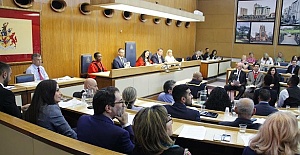 After Nesil Caliskan a by-election will be held in Jubilee ward in Enfield
After Nesil Caliskan a by-election will be held in Jubilee ward in Enfield Publishing the analysis, Labour’s Cllr Ergin Erbil said Everybody in Enfield deserves basic rights
Publishing the analysis, Labour’s Cllr Ergin Erbil said Everybody in Enfield deserves basic rights Gaza-Israel conflict Statement from Cllr Ergin Erbil, Leader of Enfield Council
Gaza-Israel conflict Statement from Cllr Ergin Erbil, Leader of Enfield Council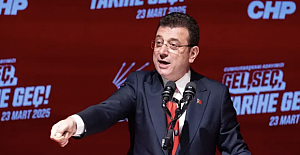 The European Union called on Turkey to uphold democratic values
The European Union called on Turkey to uphold democratic values Turkish citizens in London said Rights, Law, Justice
Turkish citizens in London said Rights, Law, Justice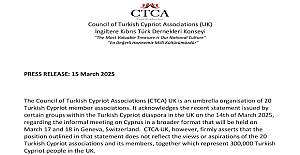 The Council of Turkish Cypriot Associations Geneva response letter
The Council of Turkish Cypriot Associations Geneva response letter Sustainable Development and ESG, Will This Become the Course for Turkic World
Sustainable Development and ESG, Will This Become the Course for Turkic World The 'Prince of Paris' has impressed in his first EuroLeague season
The 'Prince of Paris' has impressed in his first EuroLeague season Saran Media And Euroleague Basketball Extend Media Rights Partnership for Four More Years
Saran Media And Euroleague Basketball Extend Media Rights Partnership for Four More Years Will Rangers be Jose Mourinho’s next victim?
Will Rangers be Jose Mourinho’s next victim? Jose Mourinho's Fenerbahce face Rangers on Thursday
Jose Mourinho's Fenerbahce face Rangers on Thursday Barclays has become the biggest UK lender so far to cut mortgage rates
Barclays has become the biggest UK lender so far to cut mortgage rates THE SPRING STATEMENT EXPLAINED, UK ECONOMIC OUTLOOK AND GROWTH FORECASTS
THE SPRING STATEMENT EXPLAINED, UK ECONOMIC OUTLOOK AND GROWTH FORECASTS Launch of Made in Enfield gift shop to celebrate local artists and designers
Launch of Made in Enfield gift shop to celebrate local artists and designers Trial used smart Wi-Fi sensors for live building occupancy data to optimise
Trial used smart Wi-Fi sensors for live building occupancy data to optimise

